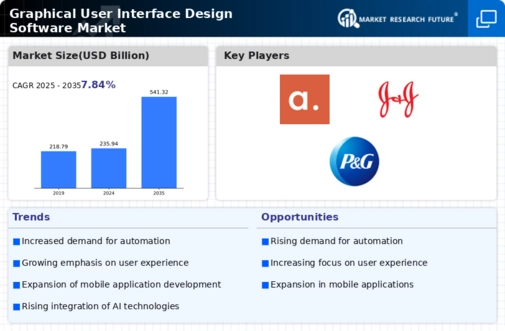Market Share
Graphical User Interface Design Software Market Share Analysis
As technology continues to advance rapidly, it's anticipated to create numerous lucrative opportunities for market players in the foreseeable future. Artificial Intelligence (AI) stands out as a widely discussed and versatile topic, finding applications across various domains, from matchmaking to autonomous vehicles. This trend has extended into the realm of user interface design tools.
Presently, AI-based UI development products like Uizard are in their developmental stages and haven't yet matured to replace human UI developers. However, they serve as valuable assistants to UI developers, offering support and aiding in the design process. Over the next few years, the global market is poised to see advancements and refinements in AI products, potentially leading these assistants to assume more responsibilities currently handled by experienced UI developers.
This shift indicates the importance for UI developers to adapt and prepare for evolving trends by acquiring new skills, often referred to as "reskilling." AI-based GUI design software is expected to revolutionize interface creation by offering more creativity and customization to meet the demands of future interfaces. Consequently, the rapid advancements in GUI design software, particularly those integrating AI, are foreseen to create enticing growth prospects for companies operating in the global GUI design software market.
Small and medium enterprises (SMEs) worldwide are experiencing rapid growth, presenting substantial revenue prospects for the market. This growth is fueled by increased outsourcing to smaller interface design companies, offering more affordable development services. Additionally, SMEs have gained significant traction in software development, contributing to the demand for GUI design tools.
GUI design tools are conveniently available through subscription-based, cloud-based models. This accessibility presents an opportunity for GUI design companies to expand their clientele and generate significant profits in the market. Moreover, creative interfaces have become a primary focus for application developers within SMEs, further driving the adoption of GUI design tools among them.
The SME market segment is anticipated to demonstrate the quickest growth within the graphical user interface (GUI) design software market during the forecast period. Consequently, the escalating adoption of GUI design tools among SMEs is poised to create substantial growth opportunities for vendors operating in the global GUI design software market.






Leave a Comment